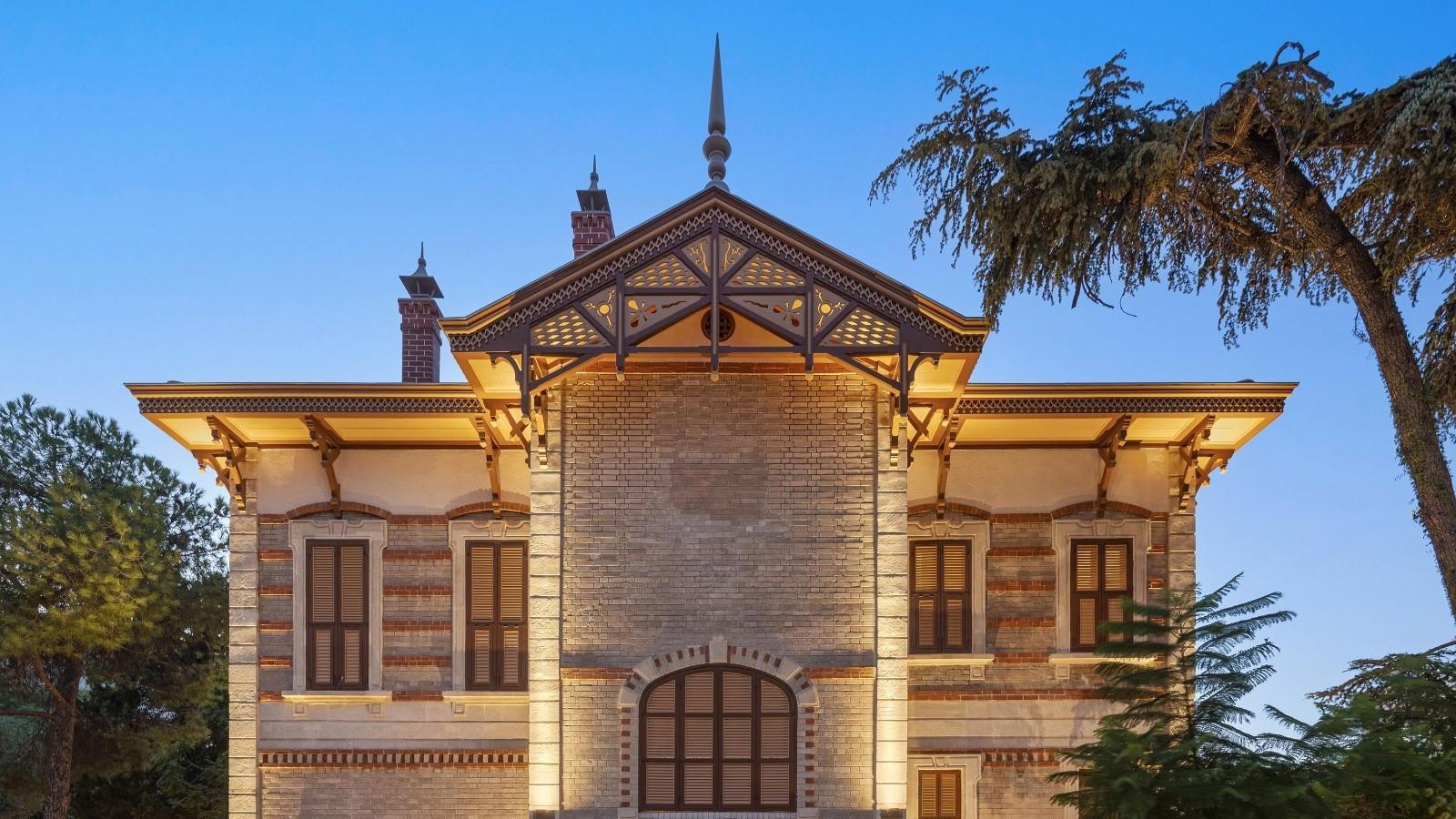
Arkas equals art! Any Izmirian would agree. İzmir, the third most populous city in Türkiye, is known for its citizens' love of a leisurely, laid-back life. Honestly, they are not known for their high intellectual prowess; art is not their primary concern. However, there is one dedicated art lover in this city who single-handedly opens museums and art centers and restores old mansions. His name is synonymous with art in this wonderful Aegean city. Lucien Arkas, a Levantine businessman of French origin, is a dedicated art collector who is in love with beauty. At the opening of his new museum in the restored Ayşe-Seniha Mayda Mansion last week, his words were memorable: “One can only love what one sees. If you have not seen art, you cannot be an admirer of art. One needs to see; that’s why I share my collections, so people can see, appreciate, and love art!” He added that this is his life’s motto and his way of spreading beauty to others.
The former owner of the historic mansion, Ayşe Mayda was Türkiye’s first female orthodontist.
She practiced her profession in her own private office for many years in Izmir, also being the first dentist of young Lucien Arkas when he was a small child. Until her death at the age of 104, she lived in the Art Nouveau-style ornate mansion, which was one of the few historic mansions left in the heavily urbanized district of Göztepe. When Arkas bought the building, Mayda was 95 years old and expressed her wish to continue living in the house until her death. Arkas humorously adds, “Of course I agreed, not knowing that it would take nine years.” The building has now been beautifully restored and opened to the public, housing a part of the Turkish classic paintings of the Arkas collection. The exhibition is permanent but must be viewed in conjunction with the temporary exhibition of another Arkas collection, titled “Tradition and Modernity-Turkish Painting in the Arkas Collection (1920-1970)” displayed at the Alsancak Arkas Art Center.
How to see!
Paintings are not only masterpieces of beauty, but they can also well be an unexpectedly important source of information. I must admit that I have a professional fault: sometimes instead of admiring the sole beauty of a painting, I find myself lost in its details, in search of hidden clues or bits of information. This is because I’m originally an architect trained in the field of conservation, and we were taught how to extract information about historic buildings from paintings. Every historian knows how to examine paintings in search of data. For example, a certain type of Ottoman Turkish carpet is named the Holbein carpet because it was first identified in the paintings of the Renaissance painter Hans Holbein the Younger. He was the artist who first depicted the Ottoman carpets meticulously, knot by knot, in his paintings.
What I’m looking for in a painting can usually be the architectural details in the background, but nowadays I’m mostly fixated on food. Scrutinizing the fruits and vegetables and cutlery and tableware, or anything that encapsulates information, I find details about old foodways. I was fortunate to have known the late food writer Gillian Riley in person, author of “Food in Art” published by Reaktion Books. She was a pioneer in seeing all the food and foodstuffs depicted by artists; she was the one to discover details on the canvas that other eyes could not see. I attended her presentations at Oxford Symposium on Food & Cookery for at least a decade, and I was astonished each time by the insight she brought to food history simply just by looking carefully at paintings. Because of my background in architectural conservation, I cannot help but look for food depictions everywhere. That’s how spotted an unnoticed gourd in the famous Sagalassos Antonin’s fountain, which is still grown by locals in the nearby village of Ağlasun.
This time, in the Arkas collection, what I saw was a long-lost and now re-found vegetable, the kavata. I’ve been writing and talking about it recently. There it was, in a painting by İbrahim Safi, a still-life with copperware, featuring brightly colored red and green versions of kavata, lying alongside eggplants and courgettes. My heart pounded. Lucien Arkas has a point. One needs to see, seeing is believing they say, but seeing is also discovering. Every time one sees a painting, or any artwork or artifact, one can discover another detail, another hidden beauty, or sometimes another bit of information. It could be the knots in a Holbein carpet, or a long-lost fruit or vegetable variety.
Lucien Arkas loves beauty. He wants to be surrounded by beauty but also enjoys sharing beauty with others. He wants people to see. Thanks to him, this time I spotted what I had been focusing on lately. I discovered perhaps the only kavata depiction by a Turkish artist. Lucien Arkas is a true art lover who gifts his collections to Izmirians. This time, this hidden detail in a painting was a gift to food historians in Türkiye.